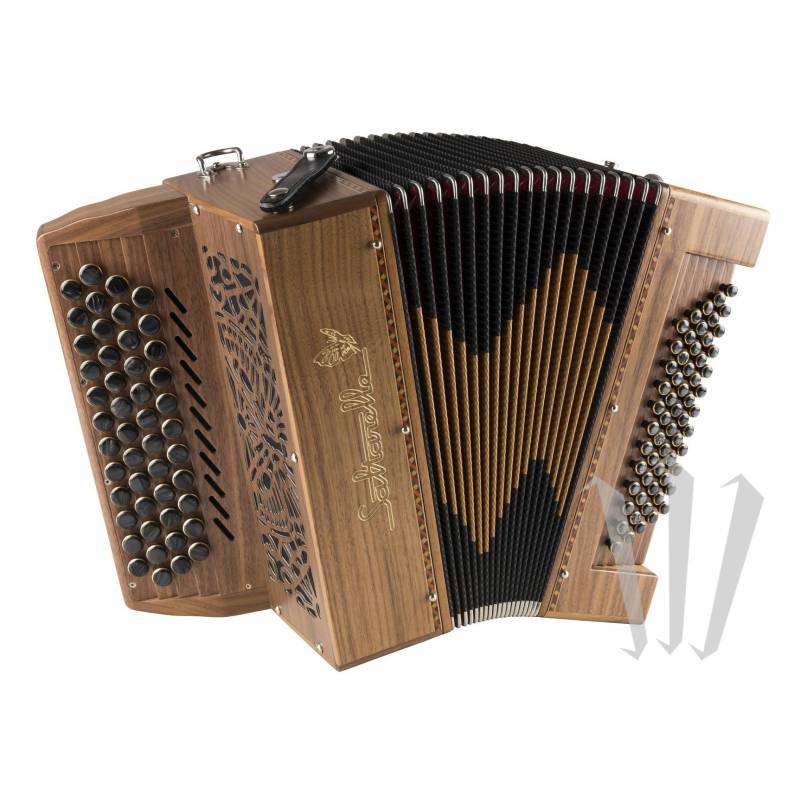

I think that for 5-finger style there is no really difference and preference for the C or B button layout. My guess is that a 5-row bayan (B-system) with back-aligned keyboard was invented to support 5-finger playing: the conservatory style. For 5-finger playing style the back-aligned keyboard. On the other hand, playing with 5 finger hand hovering over the this protruded positioned keyboard is terribly inconvenient. And here comes the meaning of the B-system layout: for this style of playing my experience showed that the B system is (much) better and meaningful. (including shipping) Excalibur Super Classic 72 Bass Chromatic Button Accordion - Black. This is perfectly devised to support the traditional "four fingers and thumb behind the keyboard" style of playing. Covers chromatic button accordion, as well. We're happy to see it again - this is an instruction book for the piano accordion in English. I sort of worked out my own fingering for scales, which I tended to. I have several tutorial books, and a very good teacher who, however plays the other keyboard, B-griff. I am learning a few easy pieces, and attempting to master scales. Available in the United States again after a long absence. I am now a few weeks in to getting to grips with the chromatic button accordion. The first thing you should notice is that the keyboard of traditional bayan is not aligned with the back of the accordion body, instead, it is placed towards the middle. Complete Method for Accordion - Luigi Anzaghi. I bought a small traditional bayan (3-row B-system chromatic button accordion) from Ukraine to learn a couple of tunes on the bayan using the traditional way: four fingers and thumb behind the keyboard.


 0 kommentar(er)
0 kommentar(er)
